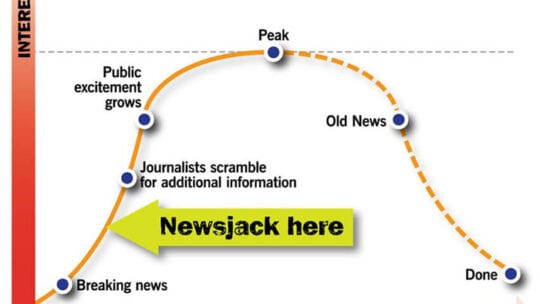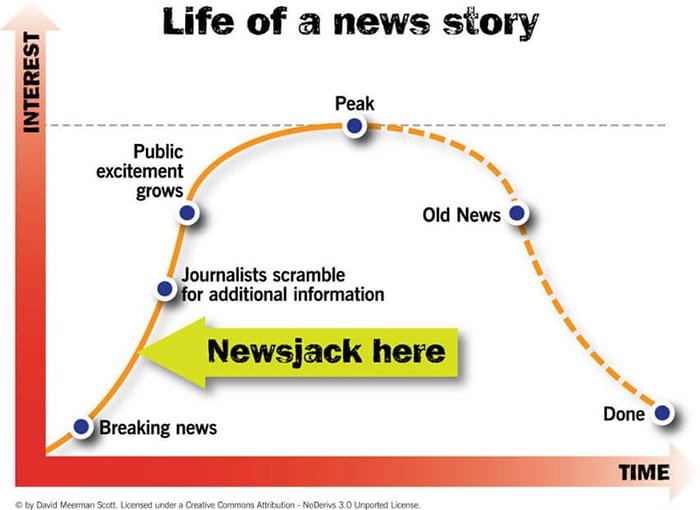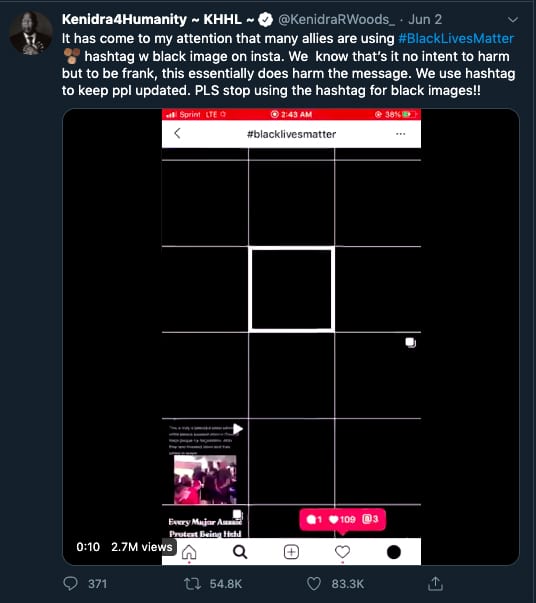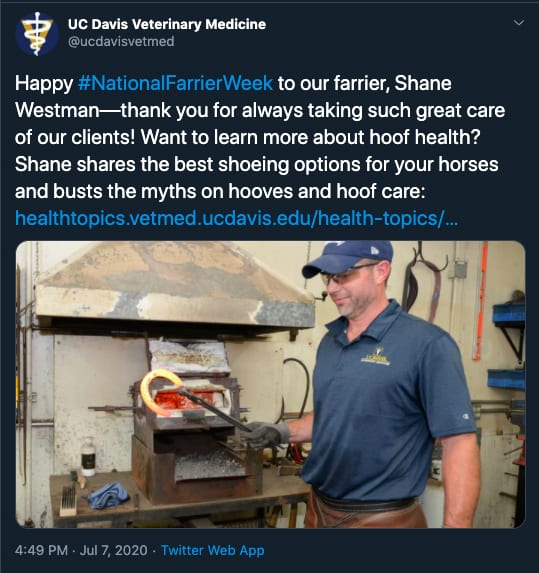

The practice of trendjacking, or pushing out content based on a concept making the rounds in the press or on social media, is not new. Brands have been inserting themselves in trending conversations, for better or worse, since Twitter hashtags launched in 2007.
In 2020, a typical instance of trendjacking goes like this: A PR professional or marketer sees a hashtag in the Trending tab of Twitter’s Explore page. He or she weighs whether the key word or phrase applies to their brand. If so, they quickly create a piece of content to throw into the mix. If the content is executed in a nuanced way that adds a new dimension to the trend, as opposed to simply mimicking it, it likely has potential as earned media.
Timing is Everything
As with many elements of PR and social media communications, timing is key. If the PR professional is jumping on a trend in an email pitch, the ideal moment is after a story breaks, but before journalists have begun running second-day coverage.
Some years ago, marketing strategist and author David Meerman Scott created a graphic illustrating the ideal time for brand communicators to pounce on an emerging trend.


Social Media Director
FINN Partners
How many hours does a PR pro have to jump in? Anything longer than one day, and you’re probably sunk, says Justin Buchbinder, social media director at FINN Partners. “A trend is likely only strong and worth being trendjacked within the first 24 hours. And the sooner, the better.”
To help PR pros move quickly, Buchbinder advises having an approval structure to fast-track posting of timely content.
“Having someone monitoring trends who can quickly send a notification up the chain of command” will help ensure that you are trendjacking, instead of “jumping on a hashtag that’s already come and gone,” he says.
Missing the Moment
More than a decade after the advent of hashtags, trendjacking may be evolving into a longer-term play. In the wake of social unrest, brands have begun chiming in on issues unfolding over a course of weeks or months rather than days.
The re-ignition of the Black Lives Matter movement and subsequent calls for police reform have occasioned a gradual rollout of purpose-driven messaging from brands.
For several weeks in late May and early June, following now-former Minneapolis police officer Derek Chauvin’s killing of George Floyd, social media messages expressing solidarity poured in from corporations and nonprofits.
White text against a black background served as the visual vernacular for brands calling for an end to racial inequality and police brutality. Some of these messages, however, fell flat. On June 2, activists launched Blackout Tuesday, calling for a pause during the workday to mourn Floyd and countless other murdered Black Americans and discuss policy solutions.
Stemming from the music industry’s #TheShowMustBePaused effort, the activity quickly spread on social media. Organizations, brands and individuals posted black squares in lieu of their usual content, often using the #BlackLivesMatter or #BLM hashtag.

Unfortunately for organizers of Black Lives Matter protests, the effort turned out poorly. The blank posts buried crucial logistical messages about marches, rallies and community outreach, in effect jamming the very signal that needed amplification. As a result, the action was widely seen as a failure. Brands that took part in it absorbed negative press coverage and lost audience goodwill.
Social Listening and Iteration
Another recent brand-attracting trend in the social justice vein is the #StopHateForProfit movement. The NAACP- and the Anti-Defamation League-led initiative calls for advertisers to boycott Facebook until the company addresses hate speech and misinformation on its platform.

SVP, Communication and CSR
Pernod Ricard USA
Amandine Robin, SVP of communications and corporate social responsibility at Pernod Ricard USA, says she leaned into social media listening as her brand decided how to approach #StopHateForProfit. The action was initially set to expire August 1.
Instead of simply posting around the hashtag, Pernod Ricard iterated on the trend, launching a social-listening app that will allow users to report hate speech.
“To avoid the pitfall of ‘paying lip service,’ brands have to take real, demonstrable action to confront the issues at hand,” Robin argues.
This heartfelt approach could well be the next evolution of trendjacking, which initially came to prominence in the form of humorous takes. [For reference, see #TheDress or Oreo’s post-Superdome blackout tweet in 2013.]
When deployed, Pernod Ricard’s app will use crowdsourcing to “surface as much…hate speech on social media as possible, making it easier for social media companies to learn what is happening on their platforms, and take appropriate action,” says Robin. “We want to facilitate that process, leveraging our influence to create an internet that is safe for all.”


U.C. Davis School of Veterinary Medicine
While trendjacking efforts tend to target a broad swath of internet users, another route is to keep the focus narrow and vertical-specific. Margaret Wong, digital media specialist at U.C. Davis School of Veterinary Medicine, says she keeps a count of recurrent trends relevant to veterinary science.
“We keep a list of hashtags in mind…that is topical to our industry and make sure we include them to maximize our reach,” when crafting tweets or content, she says. Like Robin, Wong leverages social listening and industry analysis to generate content ideas. She adds, “Even if you think you’re well-versed in the trends of your industry, it’s worth keeping an eye on other people in the industry to make sure you’re not falling behind.”
The School of Veterinary Medicine also keeps a calendar of agnostic holidays, which are perhaps celebrated more online than in person in a pandemic-stricken nation. Wong tailors these hashtags to her audience, for instance using the #FourthOfJuly hashtag “to talk about pet health and safety during firework shows, since more dogs go missing during the holiday than at any other time of year.”
The bottom line: Whether your brand is looking to jump on a trend for fun or to make a lasting social impact, be sure to use social media listening, be mindful of timing and, as always, know your audience.
Trendjacking Best Practices
- Check Twitter Trends regularly for relevant hashtags
- Move quickly once you determine what trend to jump on
- Have an approval process ready to fast-track trendjacking efforts
- Do research to make sure you fully understand a trend before commenting on it
- Consider whether your trendjacking plan has potential for lasting social impact
Source: PRNEWS
CONTACT: [email protected]
